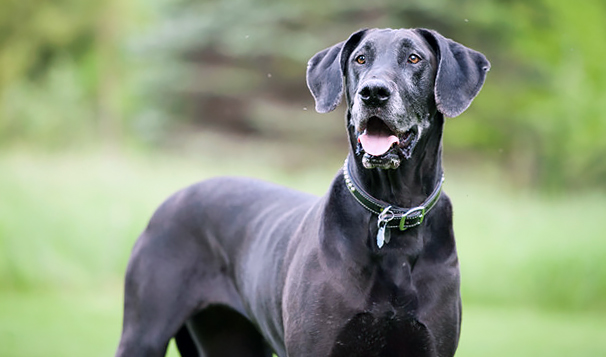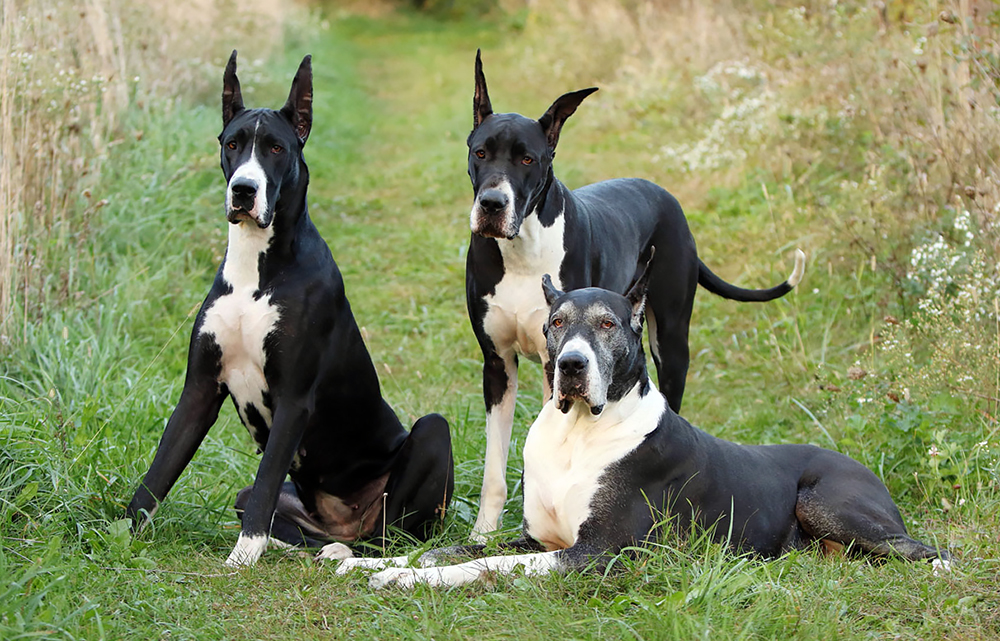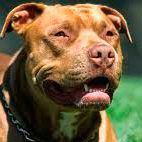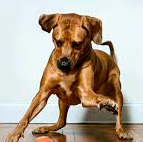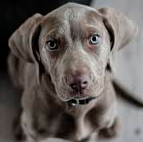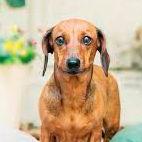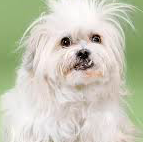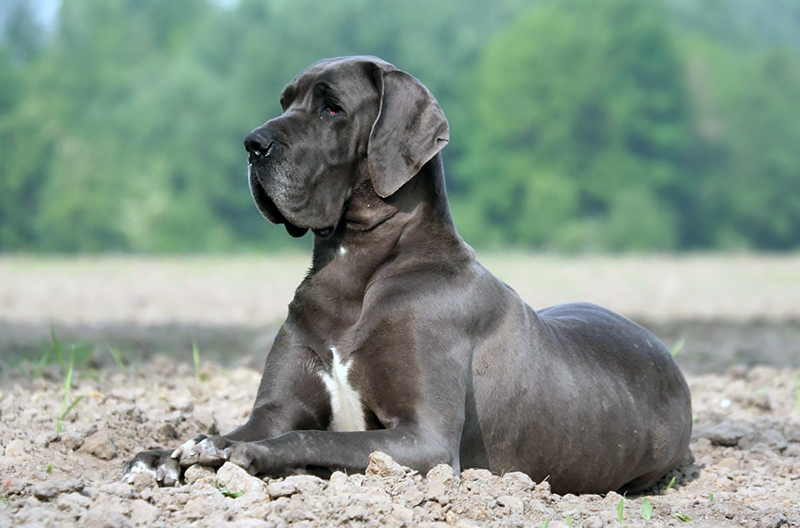
Great Dane
Great Dane pictures ➜
ORIGIN:
Germany.
UTILIZATION: Companion, Watch-and Guard Dog.
BRIEF HISTORICAL SUMMARY
As forerunners of the present day Deutsche Dogge one must look at the old “Bullenbeisser” (bulldog) as well at the “Hatz-and Saurüden” (Hunting and wild boar hounds) which were midway between the strong English type Mastiffs and a fast, agile Sighthound. The term “Dogge” was first understood to mean a large, strong dog which did not have to be of any particular breed. Later, particular names such as “Ulmer Dogge”, “Englische Dogge”, “Dänische Dogge”, “Hatzrüde”, “Saupacker” and “Grosse Dogge”, defined different types of these dogs, according to colour and size. In the year 1878 a committee of seven was formed in Berlin, consisting of active breeders and judges under the chairmanship of Dr.Bodinus, which made the decision to classify all the forenamed varieties as “Deutsche Doggen”. Thus the foundation was laid for the breeding of a seperate German breed.
In the year 1880, on the occasion of a show in Berlin, the first standard for Doggen was set down. This has been controlled by the “Deutscher Doggen-Club 1888 e.V.” and altered on a number of occasions through the years. The present day version conforms to F.C.I. model.
GENERAL APPEARANCE: The noble general appearance of the Great Dane combines a tall, strong, well made body with pride, strength and elegance. Through substance paired with nobility, balance, well proportioned outline as well as a specially expressive head, the Great Dane strikes the onlooker as a noble statue. He is the Apollo amongst all dog breeds.
IMPORTANT PROPORTIONS
The build is nearly square, this applies in particular to males. The length of back (point of sternum to pelvic tuber) should not exceed height at withers in dogs by 5%, in bitches by 10%. Height at withers: Dogs at least 80 cm.
Bitches at least 72 cm.
BEHAVIOUR / TEMPERAMENT
Friendly, kind and devoted to his owners, specially to children; reserved towards strangers. A self-assured, unafraid, easily guided and docile companion and family dog is required. He must have a high resistance to any provocation and must not be aggressive.
HEAD
In harmony with the general appearance. Long, narrow, striking, full of expression, fineley chiselled (especially under the eyes). Superciliary ridges well developed but not protruding.
The distance from the tip of the nose to the clearly defined stop and from the stop to the only lightly defined occipital bone, should be as equal as possible. The upper line of the foreface and skull should run parallel. The head must appear narrow when seen from the front, but with the bridge of nose as broad as possible. Muscles in cheeks only lightly defined and in no way protruding.
Nose: Well developed, more broad than round with large nostrils. Must be black with the exception of harlequin (white with black patches) coloured Great Danes. In these a black nose is desirable but a butterfly nose (partly depigmented) or flesh coloured nose is tolerated.
Muzzle: Deep and as rectangular as possible. Well defined corners of
lips. Dark pigmented lips. In harlequins not totally pigmented or flesh coloured lips are tolerated.
Jaws/Bite/Teeth: Well developed broad jaws. Strong, healthy and complete scissor bite (42 teeth according to usual tooth formation).
Eyes: Medium size, round, as dark as possible with lively intelligent expression. In blue Great Danes slightly lighter eyes are permissible. In harlequins light eyes or two differently coloured eyes can be tolerated. Lids should be close fitting.
Ears: Set on high, drooping by nature, medium size. Front rims lying close to the cheeks.
Neck: Long, clean, muscular. Well defined set on, tapering slightly towards the head with arched neckline. Carried upright but inclined forward on a slight slant.
BODY
Withers: The highest point of the strong body. Formed by the highest point of the shoulder-blades which extends beyond the spinal processes.
Back: Short and taut. Falling away imperceptibly to the rear.
Loins: Slightly arched, broad, well muscled.
Croup: Broad, well muscled. Falling away very slightly from the sacrum to the tail set-on and merging imperceptibly with the latter.
Tail: Reaching to the hocks. Set on high and broad, tapering evenly towards the tip. In repose hanging down with natural curve. When excited or moving, can be carried slightly sabre-fashion but not markedly above the back line. Coarse hair underneath the tail not desirable.
Brisket: Reaching to the elbows. Well sprung ribs reaching far back. Chest of good width with well defined forechest.
Lower line: Belly well tucked up towards rear, forming a gently curved line with the underside of the brisket.
FOREQUARTERS
Shoulders: Strongly muscled. The long slanting shoulder-blade forms an angle of approximately 100 to 110 degrees with the upper arm.
Upper Arm: Strong and muscular, close fitting, should be slightly longer than shoulder-blade.
Elbows: Turned neither out nor in.
Lower Arm: Strong, muscular. Seen from front and side, completely straight.
Pastern joint: Strong, firm, only slightly distinguishable from the structure of the lower arm.
Pasterns: Strong. Straight when seen from front. Seen from side, slanted very slightly towards the front.
Front Feet: Round, well arched and tightly closed (cat food). Nails short, strong, as dark as possible.
HINDQUARTERS
The whole skeleton is covered by strong muscles which make the croup, hips and upper thighs appear broad and rounded. The strong well angulated hind legs, seen from behind, are parallel to the front legs.
Upper Thigh: Long, broad, muscular.
Stifles: Strong, standing almost vertically under the hip joint.
Lower Thigh: Long, approximately same length as upper thigh. Well muscled.
Hock Joints: Strong, sturdy, turning neither in nor out.
Hocks: Short, strong, almost perpendicular to the ground.
Hind Feet: Rounded, well arched and tight (cat foot). Nails short, strong, as dark as possible.
MOVEMENT: Harmonious, lithe, covering the ground and slightly springy. The legs seen from either front or back must be parallel in movement.
SKIN: Tight fitting. In solid colours well pigmented. In harlequins the distribution of pigment is mostly in accordance with markings.
COAT
Texture of coat: Very short and dense, smooth and shiny looking.
Colours: The Great Dane is bred in three separate varieties:
Fawn and brindle / harlequin and black / and blue.
- Fawn: Pale golden fawn to deep golden fawn. Black mask desired. Small white marks on chest and toes not desirable
- Brindle: Basic colour pale golden fawn to deep golden fawn with black stripes running out in direction of ribs. The markings must be as clear and regular as possible. Black mask desired. Small white marks on chest and toes undesirable.
- White with black patches (Harlequins, formerly “Tigerdoggen”): Basic colour pure white, as far as possible without any ticking. Jet black,irregular, well broken patches well distributed on the whole body. Gray or brownish patches not desired.
- Black: jet black, white markings permitted. Included here are also “Manteltiger” in which the black covers the body like a blanket but muzzle, throat, chest, belly, legs and tip of tail may be white.
- Blue: Clear steel blue, white markings on chest and feet permissible.
FAULTS
Any departure from the foregoing points should be considered a fault and the seriousness with which the fault is regarded should be in exact proportion to its degree. This applies particulary to the following departures from the standard:
General Appearance: Lack of correct gender characteristics, lack of harmony. Too light, too coarse.
Temperament: Lack of self assurance, nervous, easily provoked.
Head: Upper lines of foreface and skull not parallel, apple head, wedge shaped head. Too little stop, over developed muscles in cheeks.
Muzzle: Pointed, lacking in flews, flews too pendulous. Bridge of nose dished, Roman nose or aquiline nose.
Mouth / Teeth: Any departure from a complete set of teeth (only the absence of both PM1 in the lower jaw can be tolerated); irregular position of individual incisors as long as bite remains overwhelmingly closed. Too small teeth. Pincer bite.
Eyes: Slack lids, haw too red. Light, piercing or amber coloured eyes. Watery blue eyes or two different coloured eyes in all solid colours. Eyes too far apart or slit eyes.
Ears: Set on too high or too low. Standing off sideways or lying quite flat to the cheeks.
Cropped ears: shape and length ill matched with the head, not carried evenly taut and erect.
Neck: Short, thick neck, ewe neck, throatiness or dewlap.
Back: Sway back, roach back, too long in back. Backline running up towards rear.
Croup: Falling away steeply or completely level.
Tail: Too thick, too long or too short. Set on too low or too high above the back line. Hook shaped or squirrel tail as well as tail turned sideways. Tail which is damaged, thickened at the tip or has been docked.
Thoracic Cage: Flat or barrelshaped ribs. Lack of width or depth of chest. Strongly protruding sternum.
Lower Line: Belly line not sufficiently tucked up. Teats which have not retracted.
Forequarter: Insufficient angulation. Light bone, weak muscles. Stance not vertical.
Shoulders: Loose, loaded. Steep set of shoulder-blade.
Elbows: Loose, turned in or out.
Fore Arm: Distorted. Distended above the pastern.
Pastern-Joint: Distended, very flexible or knuckled over.
Pastern: Too slanted or too steep in position.
Hindquarter: Too much or too little angulation. Cow hocks, too narrow or bow legged stance.
Hocks: Distended, unstable.
Feet: Flat, splayed, long shaped.
Movement: Covering too little ground, restricted action. Frequent or constant pacing. Lack of co-ordination between front and hind action.
Coat: Make up: Stockhaar (double coat), dull coat.
Colours:
- Fawn: Gray-fawn, blue-fawn, isabella (cream) – fawn or dirty fawn.
- Brindle: Ground colour silver blue or isabella. Smudged markings.
- Harlequin: Blue-Gray ticked ground colour. Largish fawn-gray or blue-gray patching.
- Black: Fawn, brown or blue-black colour.
- Blue: Yellowish or black-blue colour.
SERIOUS FAULTS
Temperament: Shyness.
Mouth / Teeth: Overshot, undershot, wry mouth.
Eyes: Entropion, ectropion.
Tail: Kink in tail.
DISQUALIFYING FAULTS
Temperament: Aggressiveness or fear biting.
Nose: Liver colour or split nose.
Colour: Fawn or brindle Great Danes with white blaze, white neck collar ring, white feet or “stockings” and white tip of tail.
Blue Great Danes with white blaze, white neck collar ring, white feet or “stockings” and white tip of tail.
Harlequin Great Danes which have white without any black (albinos), as well as deaf dogs. So called china-brindles (they show predominantly blue gray, fawn or brindle patches); “gray-brindles” (these have gray ground colour with black patches).
Height: Below minimum height.
NOTE: Male dogs must have two apparently normal testicles fully descended into the scrotum.


